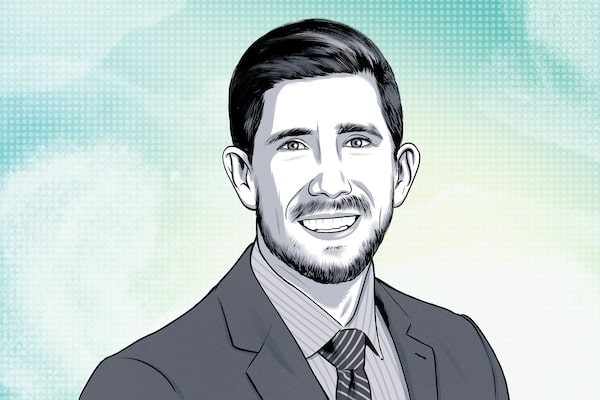
Rodrigo Gordillo of ReSolve Asset Management.The Globe and Mail
Sign up for the Globe Advisor weekly newsletter for professional financial advisors on our sign-up page. Get exclusive investment industry news and insights, the week’s top headlines, and what you and your clients need to know. For more from Globe Advisor, visit our homepage.
While many investors believe the market fallout from surging inflation is largely over, money manager Rodrigo Gordillo sees more volatility ahead.
“The biggest blind spot I see for market participants today is not seeing that inflation continues to be a risk,” says Mr. Gordillo, president and portfolio manager at ReSolve Asset Management SEZC, a Cayman Islands-based company affiliated with Toronto-based ReSolve Asset Management Inc.
“Inflation is still going up, just at a lower rate than before,” adds Mr. Gordillo, noting that the rate of change in inflation could “thrust up at any moment again.” He predicts a “decade of inflation volatility” as central banks struggle to align interest rates with cost-of-living increases.
To prepare for the bumpy economic road ahead, Mr. Gordillo believes investors should not only hold stocks and bonds but also currencies, gold and commodities as hedges against inflation.
The Globe spoke with Mr. Gordillo recently about his investing style and one of his alternative investing strategies that has produced double-digit returns in recent years.
Describe your investing style.
We’re systematic global macro managers. That means we’re 100 per cent rules-based and invest long [buy] and short [sell] across all global markets. We invest in global equities, bonds, commodities and currencies. We aim to maximize global diversity and balance risk across our long and short positions.
You’re specifically talking here about your futures yield carry strategy. What is that?
A futures yield carry strategy aims to capitalize on the difference between a market’s current [spot] price and its futures contract price. So, just as investors might choose stocks with high dividend yields as a solid strategy for a good return over time despite potential market fluctuations, a futures yield carry strategy selects long and short positions in futures contracts based on the expected “carry” return.
For example, if the spot price for Brent Crude oil is US$82 a barrel but the futures price for June is US$78, the carry in this context is the profit of US$4 a barrel. In a futures yield carry strategy, the assumption is that the spot price will remain consistent over time. In the oil example, that’s staying at US$82 from now to June. If supply and demand don’t change, the expectation is that the June futures contract will increase gradually to match the US$82 spot price as June approaches. That makes buying the June futures contracts at US$78 a profitable decision.
The strategy banks on the belief that the supply and demand situation in June will mirror what we see today, making the lower-priced futures contracts a good deal. It’s similar to investing in a stock for its dividend yield. In both cases, there’s no guarantee of a positive return if the asset value drops.
What is the performance of this particular strategy?
Our futures yield carry strategy has returned 19.1 per cent over the past year as of Feb. 29 and has seen an annualized return of 18.9 per cent since inception in September, 2021. The performance is based on total returns, net of fees.
What are you buying, or where are you long, in your case?
We’re long on energy. Right now, we’re seeing backwardation, which means it costs less to buy oil in the future than it does now. Using the example above, we expect the oil futures price to rise and to profit from that.
We are also long on U.S. currency because of its higher yield than other global currencies. The U.S. economy has been much stronger lately than other countries worldwide. The U.S. Federal Reserve Board has been able to increase interest rates without causing a recession yet. Other nations’ economies couldn’t support the same level of rate hikes as the U.S. was able to set.
What are you shorting?
We have both long and short positions in bonds, but we’re shorting more bonds. With the inverted yield curve, we believe it’s better to be long on the higher-paying, shorter-duration bonds and short on the longer-duration, lower-yielding bonds. If the yield curve goes back to normal, that would change.
Name a stock in your personal portfolio that you wish you owned more of.
I wish I owned more gold in my personal portfolio, especially given the recent run-up in price. I’m Peruvian, born and raised, and my family immigrated to Canada in the late 1980s because of the hyperinflation in that country. To me, gold is the last resort for protecting your purchasing power against a government printing too much money. I think gold is an undervalued long-term hold for investors.
What advice do you have for new investors?
Don’t shy away from liquid alternative strategies that can help reduce portfolio risk. Managed futures is one of my favourite strategies. People tend to shy away from alternatives because they’re relatively new for retail investors. However, institutional investors have used these strategies successfully for decades.
This interview has been edited and condensed.
For more from Globe Advisor, visit our homepage.